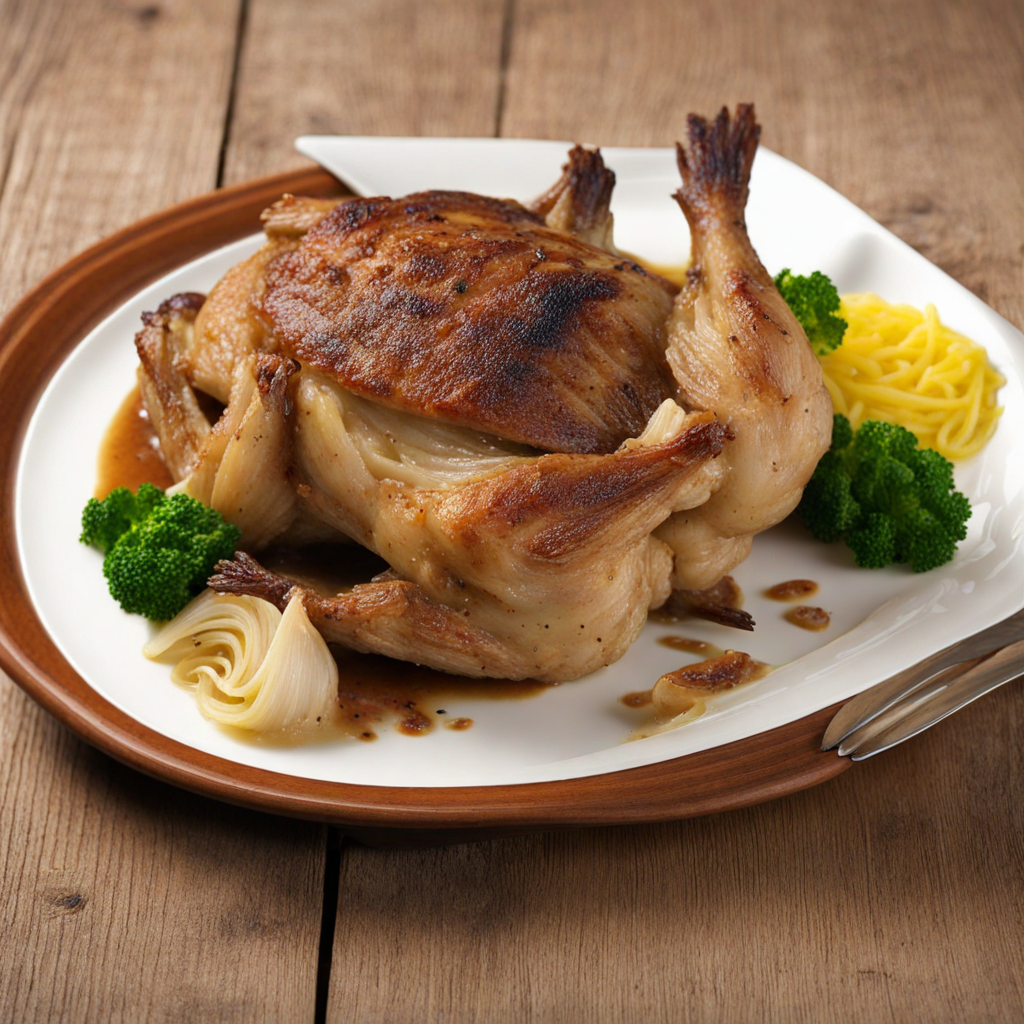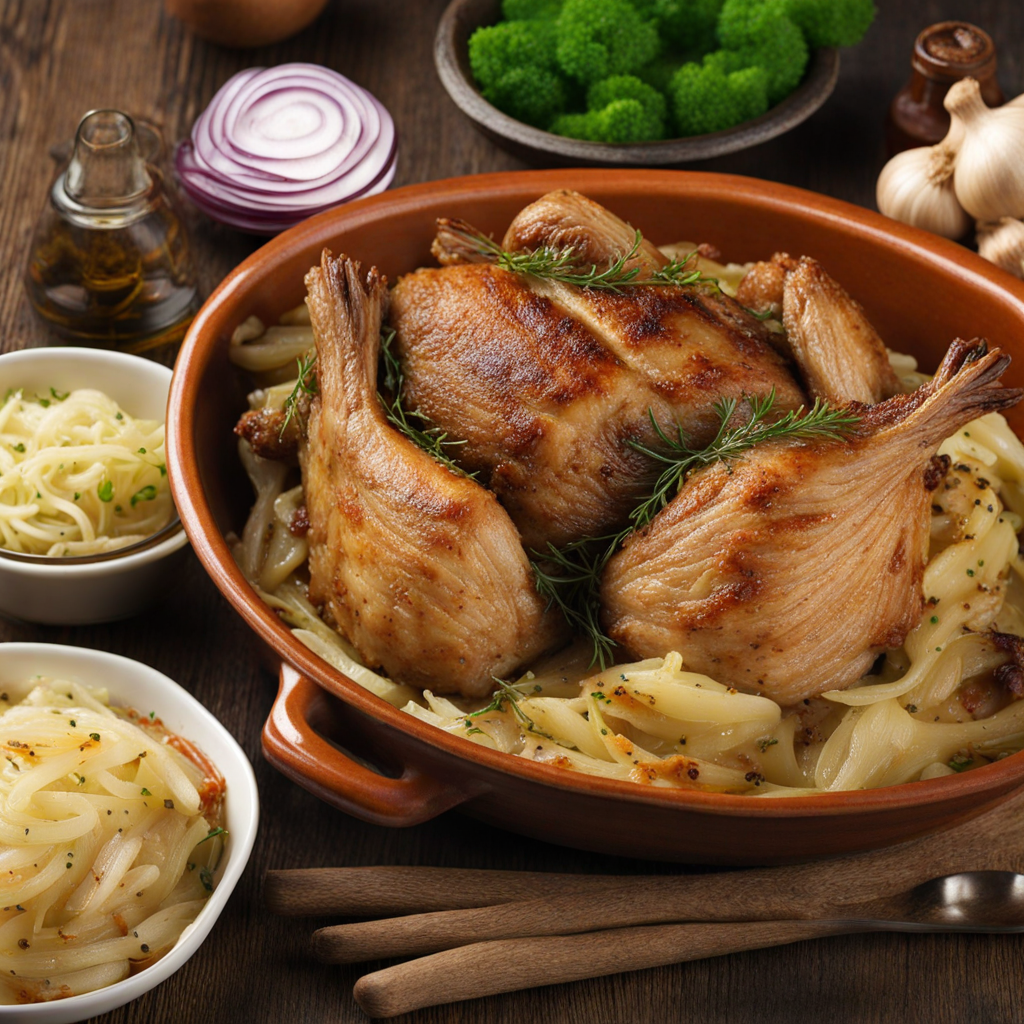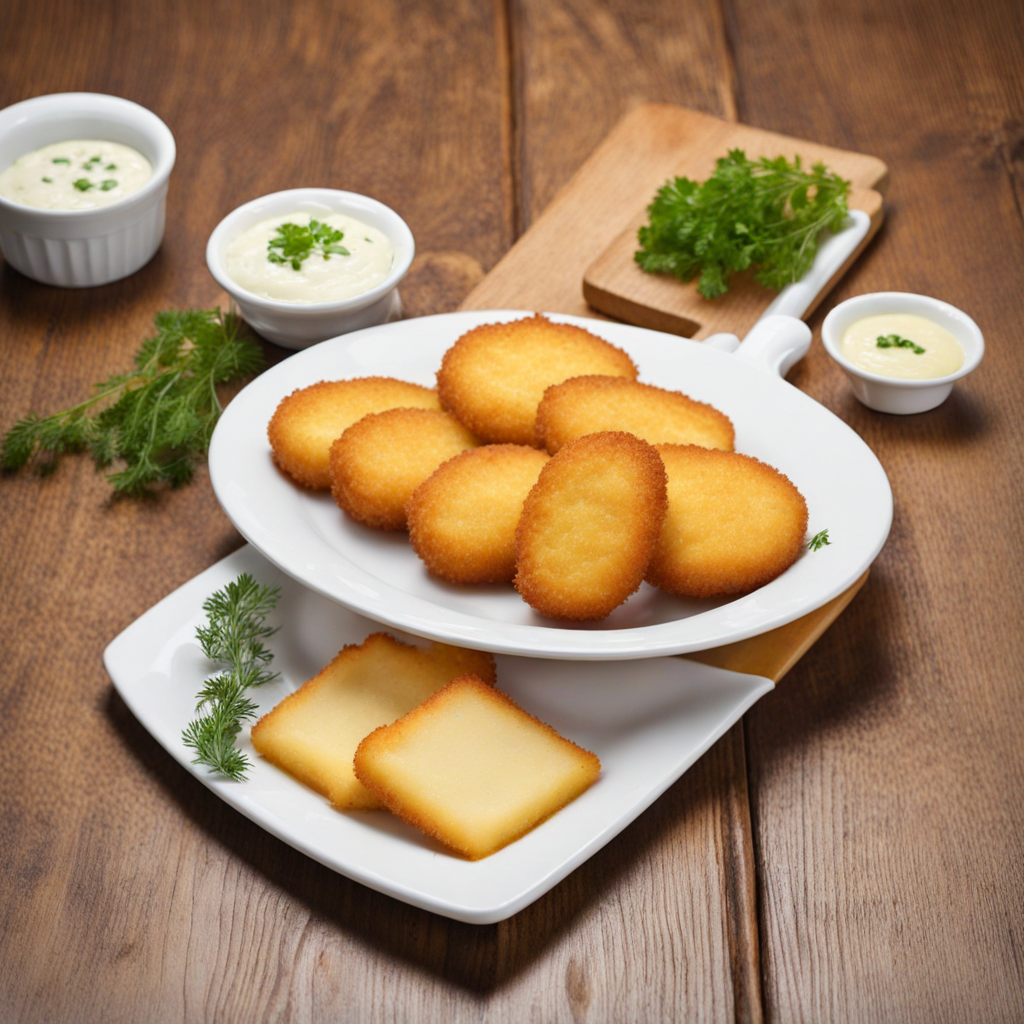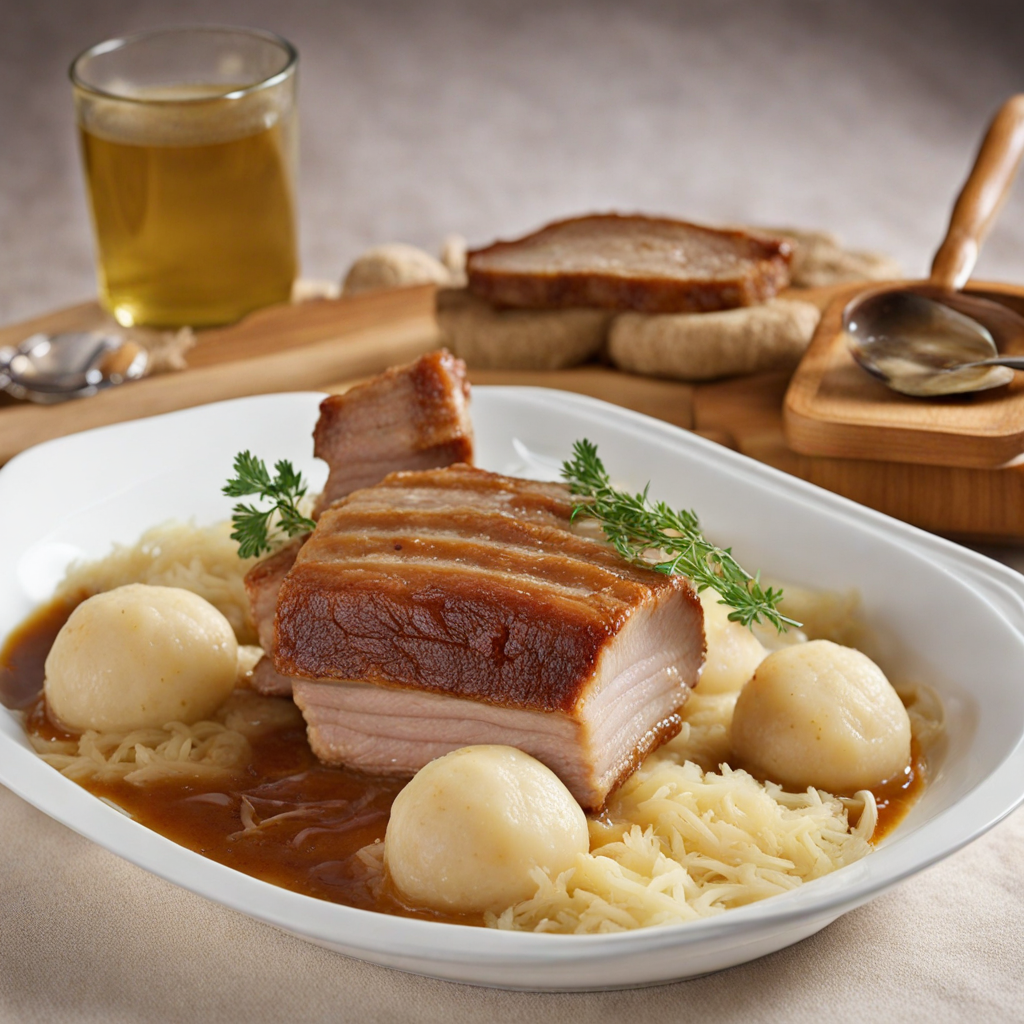Moravian Sparrow
Moravian Sparrow, or "Moravský vrabec," is a delightful traditional dish hailing from the picturesque Moravian region of the Czech Republic. This hearty meal typically consists of tender, marinated pork, often from the shoulder or belly, which is seasoned with a blend of aromatic spices, including garlic, caraway seeds, and black pepper. The meat is then slow-cooked until it reaches a melt-in-your-mouth tenderness, allowing the flavors to meld beautifully. It's often served with a side of crispy roasted potatoes or dumplings, making for a satisfying and filling dish that embodies the rustic charm of Czech cuisine. The unique aspect of Moravian Sparrow lies not only in its preparation but also in its presentation. The dish is often accompanied by a side of sauerkraut, providing a tangy contrast to the rich, savory pork. The combination of the succulent meat and the slightly sour, crunchy cabbage creates a harmonious balance that tantalizes the taste buds. Additionally, a drizzle of gravy, made from the juices of the cooked pork, adds an extra layer of flavor, enhancing every bite and bringing the dish together in a comforting, home-cooked style. Moravian Sparrow is more than just a meal; it reflects the heritage and culinary traditions of the Czech people. Often enjoyed during family gatherings or festive occasions, it embodies warmth and togetherness. As you delve into this dish, you'll experience the essence of Moravian culture, where simple ingredients come together to create something truly special. Whether you're savoring it in a cozy restaurant or preparing it at home, Moravian Sparrow promises a memorable culinary adventure that invites you to explore the rich flavors of the Czech Republic.
How It Became This Dish
The History of Moravský Vrabec: A Culinary Gem of the Czech Republic #### Origins Moravský vrabec, or "Moravian Sparrow," is a traditional dish hailing from the Moravian region of the Czech Republic. Despite its intriguing name, the dish is not made from sparrows but is instead a hearty preparation of marinated and roasted pork, typically served with a side of sauerkraut and bread dumplings. The origins of Moravský vrabec can be traced back to the rural agricultural practices of Moravia, where pork was a staple protein for local communities. Historically, the Moravian region, characterized by its rolling hills, fertile lands, and a rich tapestry of vineyards, has been an agricultural heartland. The abundance of pigs in the area made pork a primary source of sustenance for families. In the past, the slaughter of pigs during autumn was a communal affair, often leading to various preservation methods such as curing and smoking. This practice is deeply rooted in the region's culture and has greatly influenced its culinary traditions. #### Cultural Significance Moravský vrabec holds a special place in the hearts of Moravians and Czechs alike. It is often associated with festive occasions, family gatherings, and traditional feasts, reflecting the communal spirit of sharing food. The dish embodies the essence of Moravian hospitality, where food is not merely sustenance but a means of bringing people together. In addition to its role in social gatherings, Moravský vrabec is tied to Moravian identity. The dish showcases the region's agricultural practices and culinary heritage, representing a connection to the land and its resources. It is often celebrated in local festivals, where families and communities come together to enjoy traditional foods, music, and dance. This cultural significance is further emphasized by the use of locally sourced ingredients, which highlights the importance of regional produce in Moravian cuisine. #### Development Over Time The evolution of Moravský vrabec reflects broader changes in Czech society, agriculture, and culinary practices. In the early 20th century, as industrialization began to change the landscape of food production, traditional dishes like Moravský vrabec faced challenges. The shift towards urban living and the rise of convenience foods led to a decline in the preparation of traditional meals in many households. However, the late 20th century saw a resurgence of interest in traditional cuisine, as people began to appreciate the authenticity and cultural significance of their culinary heritage. In contemporary times, Moravský vrabec has been revitalized and is now featured on menus in restaurants across the Czech Republic and beyond. Chefs have taken the traditional recipe and infused it with modern culinary techniques, creating variations that appeal to contemporary palates while staying true to the dish's roots. The use of locally sourced ingredients, artisanal bread dumplings, and house-made sauerkraut reflects a growing emphasis on sustainability and farm-to-table dining. Moreover, the globalization of cuisine has introduced Moravský vrabec to an international audience. As Czech expatriates and food enthusiasts share their culinary traditions, the dish has gained recognition outside of its native region. Food festivals, cultural events, and online platforms have played an integral role in promoting Moravský vrabec as part of the larger narrative of Czech cuisine. #### Recipe and Preparation The preparation of Moravský vrabec is a labor of love, often involving marinating the pork in a mixture of garlic, onion, and spices, such as cumin and black pepper. The marinated meat is then slowly roasted to achieve a tender, succulent texture, often basted with its own juices. The accompanying side dishes, such as sauerkraut and bread dumplings, are essential components that complement the richness of the pork. The bread dumplings, known as "knedlíky," are a staple in Czech cuisine and are made from a mixture of flour, yeast, and stale bread. They serve to soak up the flavorful sauce generated during the roasting process, making each bite a delightful experience. The tangy sauerkraut balances the richness of the meat, creating a harmonious flavor profile that embodies the essence of Moravian cooking. #### Modern Interpretations and Future As culinary trends continue to evolve, so does Moravský vrabec. Modern interpretations may include variations in marination techniques, the introduction of different spices, or even the use of alternative cuts of meat. Vegetarian and vegan adaptations have also emerged, substituting pork with plant-based proteins while maintaining the dish's essence and flavor. The future of Moravský vrabec looks promising, with food enthusiasts and chefs dedicated to preserving and reinventing this traditional dish. The growing interest in regional cuisines and sustainable practices offers a platform for Moravský vrabec to thrive in a contemporary context. As more people seek authentic culinary experiences, dishes like Moravský vrabec serve as a reminder of the rich culinary tapestry that defines the Czech Republic. #### Conclusion Moravský vrabec is more than just a dish; it is a culinary emblem of Moravian heritage, embodying the history, culture, and traditions of the region. Its journey from humble beginnings as a rural staple to a celebrated dish on modern tables is a testament to the resilience of traditional cuisines in a rapidly changing world. As Moravský vrabec continues to evolve and adapt, it remains a cherished part of the Czech culinary landscape, inviting all to partake in its rich flavors and storied past.
You may like
Discover local flavors from Czech Republic







